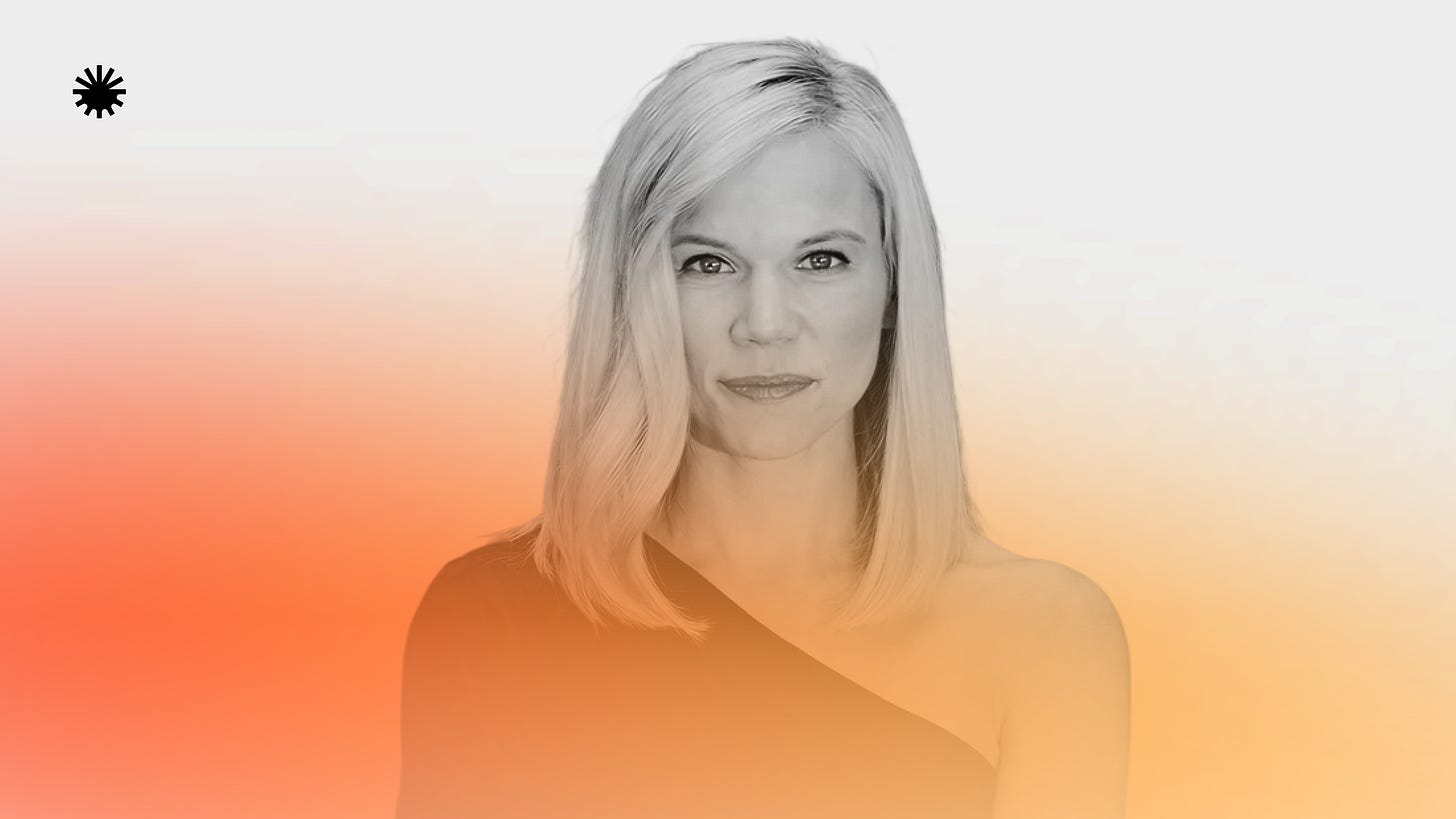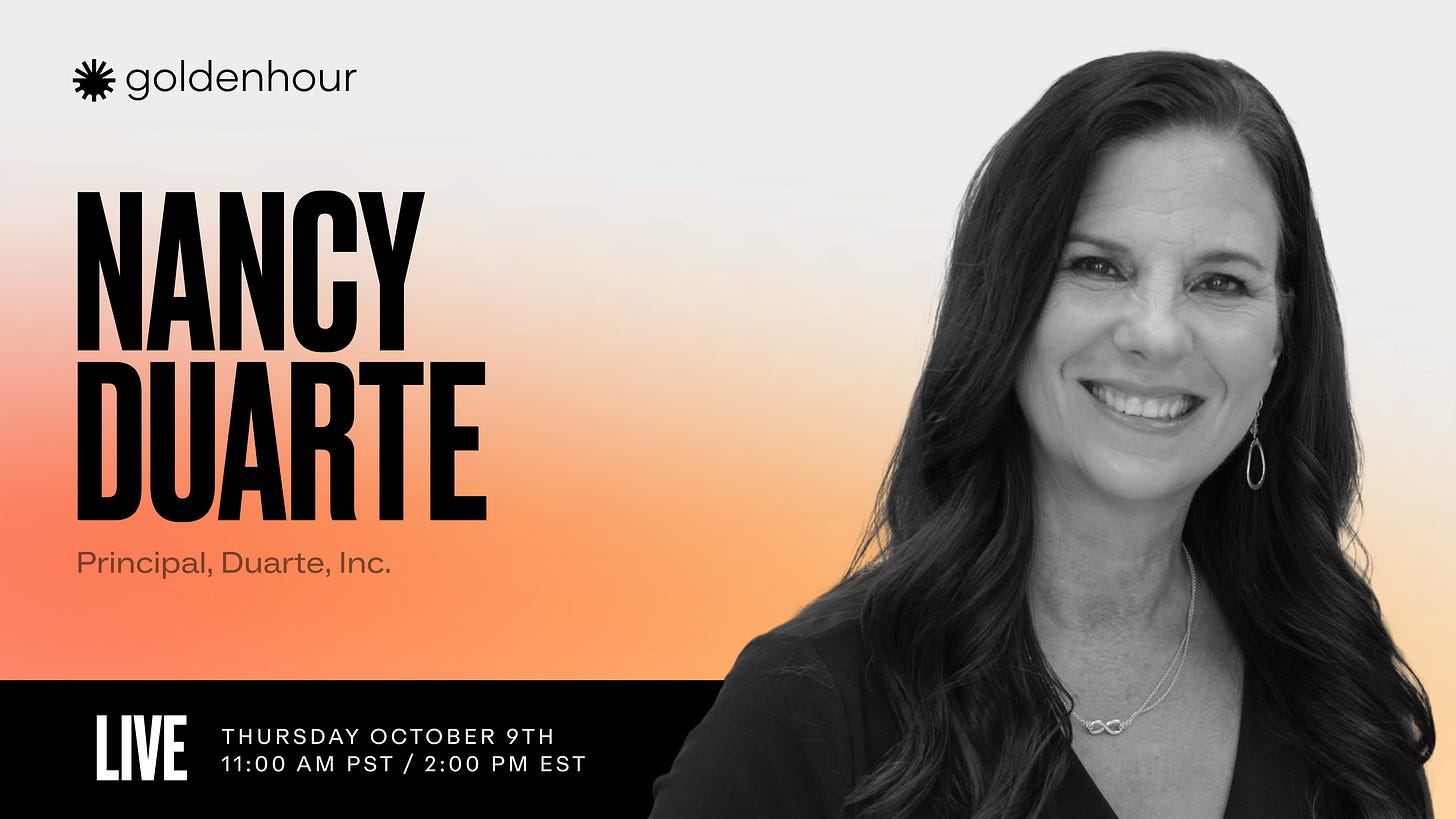How CMOs Should Think About 9-9-6
What to do when working hard turns toxic — and ambition stops serving us.
The 9-9-6 mindset — working 9 a.m. to 9 p.m., six days a week — is fast becoming the unofficial mantra of the AI era.
As AI accelerates, the pressure on humans is to keep pace — to move faster, do more, and sleep less. Founders glorify output. Teams wear exhaustion like a badge. And for CMOs trying to balance brand, team, and self, it can feel like the only choice is to hustle harder.
But the truth is more nuanced.
There are seasons when intensity is required — launches, events, end-of-quarter, moments that test what we’re made of. The problem isn’t hustle itself.
It’s staying stuck there.
That’s what I explored with Amanda Goetz, CMO, founder, and author of Toxic Grit (which you can pre-order here). Our conversation opened my eyes to a transformative realization: we all play different roles in different seasons — and true freedom comes from knowing which one you’re in.
Here are five takeaways that stayed with me — lessons for any leader navigating ambition in an age of acceleration.
1. Recognize the Character You’re Playing
“There are seasons where hustle makes sense — and seasons where it doesn’t. The toxicity comes when we ignore those transitions.”
Amanda’s idea of character theory reframes leadership as a set of roles we inhabit over time: the Builder, the Parent, the Partner, the Creative, the CEO. Each requires different energy, priorities, and pace.
Toxic grit sets in when we blur those roles together — when we try to perform as every character at once and inevitably burn out.
For CMOs, that might mean scaling a company while raising kids, driving creativity while firefighting operations, or being both a visionary and execution machine.
Healthy leadership begins with awareness.
Know the character your season demands — and give yourself permission to play it fully without guilt for pausing the others.
Check out my full conversation with Amanda on YouTube or wherever you get your podcasts.
2. Redefine Success by Season, Not Standard
“You can have it all — just not all at once.”
Balance is a myth if you define it as equal attention to everything. Amanda’s point is that balance isn’t about symmetry — it’s about sequence.
There are seasons to scale and seasons to sustain. Moments when the company needs 120% of your time, and moments when your family or your health takes priority. The danger is trying to measure every season by the same yardstick of constant growth and visibility.
CMOs live under unique pressure to perform continuously — to drive pipeline, generate demand, ship campaigns, and stay “always on.” But high performance is cyclical.
When success is defined by season, we stop judging ourselves by impossible standards and start showing up fully for the moment we’re in.
3. Use Hustle as a Tool, Not an Identity
“If someone has to work 12 hours a day to do their job, they’re probably not very good at their job.”
Hustle has value — it’s a form of focus. It compresses learning curves and forces creative breakthroughs. But when hustle becomes the only gear we know how to use, we lose strategic altitude.
Amanda’s view is that hustle should be cyclical, not chronic. There are chapters that demand 9-9-6 intensity — like launching a product, entering a new market, or reestablishing a brand. But those sprints should serve a purpose, not a persona.
When leaders attach their identity to being “the hardest worker in the room,” they unconsciously create cultures that reward exhaustion instead of effectiveness. Over time, those cultures burn bright — and then burn out.
The best CMOs treat hustle like interval training: a mix of effort and recovery.
You sprint to build momentum, then slow down to reflect, learn, and reimagine. The art isn’t in going faster — it’s in knowing when to accelerate and when to stop pressing the gas.
4. Focus on What Really Moves the Scoreboard
“At the end of the day, I ask myself — what are the two things that would make today a win? Then I let the rest go.”
Amanda calls this her “two points on the board” rule — a simple way to reframe productivity.
Each morning, she identifies the two meaningful outcomes that would make the day feel like a success — not ten, not twenty, just two. Then she measures herself against that small, intentional list instead of an endless one.
It’s not about lowering the bar. It’s about lifting the weight of unrealistic expectations.
For CMOs, this shift is transformative. Marketing leadership is infinite in scope — every day brings more inputs than one human can handle.
By defining two daily “points,” Amanda protects focus and energy. She moves the ball forward without drowning in the noise.
The takeaway: productivity isn’t about doing everything. It’s about doing the right things with full presence — because real progress happens when you move the work that actually makes an impact.
5. Lead From Wholeness, Not Depletion
“If you’re not healthy — emotionally, mentally, physically — you’re not going to create something sustainable. The energy you bring into your work, your team, your brand… it all reflects back.”
I shared during our conversation my belief that a brand can only be as healthy as the humans who lead it — and Amanda expanded on that truth beautifully.
She connected leadership health directly to creative output and brand vitality. When we lead from depletion, our brands feel anxious and reactive — constantly chasing relevance. But when we lead from wholeness, our brands feel grounded, magnetic, and alive.
The market mirrors your energy. Teams mirror your tone. Creativity mirrors your capacity.
If you’re running on empty, your brand eventually will, too.
AI can automate information. But it can’t replicate the emotional texture that human leaders bring to the table — the warmth, courage, and empathy that actually move people.
Closing Thoughts
The 9-9-6 mindset isn’t new — it’s just louder in the AI era.
But the CMOs who will thrive aren’t the ones who work the most hours; they’re the ones who understand their season.
They’ll know when to step into the Builder, when to channel the Creative, and when to prioritize Partner, Parent, and Self.
They’ll measure success not by perpetual motion, but by presence, rhythm, and wholeness.
Ambition isn’t the enemy of balance — it just needs boundaries.
🔥 Special Announcement 🔥
Next week, we’re honored to welcome Nancy Duarte as our featured guest on Goldenhour Live.
Nancy is a best-selling author, communication visionary, and CEO of Duarte, Inc. — the largest communication firm in Silicon Valley. She’s shaped how the world’s most influential brands and leaders tell their stories, guiding everyone from Apple to TED speakers to craft messages that move audiences and inspire change.
She also happens to be one of my all-time heroes — so I’m personally thrilled to learn from her in real time.
Click the image above to join us live on LinkedIn, Thursday October 9th at 11:00 AM PST / 2:00 PM EST.
We’ll look forward to seeing you there!
Thanks,
Anthony





I could listen to you two all day! Can't wait to read the book Amanda!